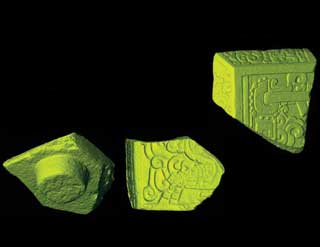Spotlight
Research: Laser Focus
| USF News

The new scanner technology allows scholars to document and analyze excavation sites and historical structures, such as these 2,000-year-old stone sculptures from the Guatemalan city of Kaminaljuyú, at a level of detail and virtual reality not previously possible.
Two USF researchers who have used high-tech scanning devices to unlock the secrets of archaeological sites around the world are the new North American training directors for an advanced generation of laser scanners.
Assistant professors Lori Collins and Travis Doering, directors of the Alliance for Integrated Spatial Technologies (AIST) at USF, will train users on a new portable scanner that captures 976,000 measurement points per second with millimeter-accuracy.
The new FARO Laser Scanner Focus3D technology offers the most efficient and precise method for measurement and 3D documentation of a wide range of projects including construction, crime scenes and accident sites. In just minutes the revolutionary scanner can do what used to take days — produce detailed, three-dimensional images of complex environments and geometries.
Collins and Doering, who have used advanced technologies to record, capture and recreate ancient archaeological sites spanning many cultures, say the new, laser-based technology will speed some of the most tedious, time-consuming and costly processes in industrial plant and architectural design, heritage management, forensic analysis, building construction and civil engineering.